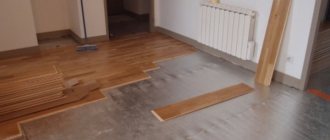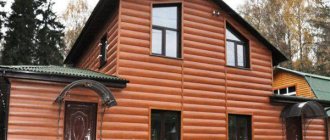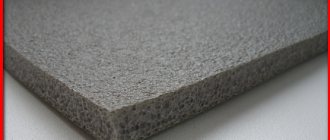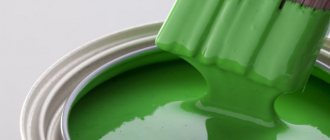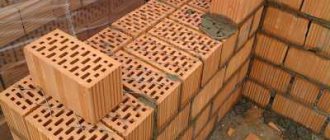Water dispensers with a rotating pulley
Devices with rotating cabinets are not very common today.
Their operating pressure on average fluctuates around 2 bar. Additionally, it should be noted that a wide variety of traction devices are used. If we consider domestic analogues, their pipes are used with seals. In this case, the couplings are installed directly under the central cap. In this case, the sock is located at the base of the device. All this is found in order to increase the operating pressure parameter of the device. Speakers of this type are usually installed on wide platforms. In this case, screw connecting pipes are used. The outlet pipe is directly connected to the base of the sock. In this case, the remote rod is tightened until it stops. In this case, the oil seal in the column can be adjusted using a wrench
At this stage it is important not to strip the locknut. In this case, the screws are first tightened from the top
In this case, the coupling must be selected with a seal. The average cost of a standpipe of this type is around 22 thousand rubles.
Speakers powered by gas cylinders
In country houses where there is no gas pipeline or problems with the power of the electrical network, a gas water heater powered by a gas cylinder will be a salvation.
A cylinder with a capacity of 50 liters of gas is enough for daily use of hot water with a minimum consumption of 3 people per month.
To comply with safety standards, you must make sure that the dispenser model is designed to use the type of gas with which the cylinder is filled. If the dispenser is to be re-equipped, then it is required to leave a mark on the dispenser with the re-configure number and the type of gas permitted for use.
There are standard indicators for work:
- the cylinder is used with a reducer with a stabilization pressure within 300 mm of water column;
- the minimum vapor phase capacity for a cylinder is 1 m3/hour;
- a hose used for working with gas equipment is 2.5 meters long, with an internal cross-section of 12 mm.
Requirements
What is cold welding?
For the installation and operation of a water-folding street structure, certain requirements apply:
- It is best to place the dispenser at a roadside pedestrian intersection or within the boundaries of a sidewalk;
- for maintenance and repair of the column, free access is required, so there should be no other structures around the structure within a radius of at least 100 meters;
- It will significantly help to ensure that the pump does not freeze in the winter by placing it on a hillock or natural elevation - this allows the residual water to independently drain into the drainage well;
- the structure can be positioned relative to the central water supply network using a street branch of the water supply system, on branches from the central main line or on ring lines;
- If a dead-end branch of the water supply network is selected for installation of the structure, then the advisability of connecting it will be justified only if the water draw-off from the standpipe is large and regular, otherwise the structure may freeze in winter.
During the next use of the column, this portion of previously drained water is the first to flow through the ejector mechanism to the next consumer.
Read with this
Why does the water column not freeze in winter?
A distinctive feature of the design of an outdoor water pump is to ensure non-freezing in winter (the water in the pump when closed is below the freezing depth of the soil).
It should be noted that the water pump, like the water supply network itself, can still freeze in winter. This depends on the “severity” of winter and the water withdrawal regime.
Operation and Maintenance
Geyser for an apartment
The speakers need to be serviced monthly. Check the ejector for leaks:
- a plug made of wood is driven into the drain pipe located in the upper part of the riser;
- press the lever;
- water fills the entire volume of the speaker body;
- the lever is released, and if the water has not increased in volume within 10-20 minutes, it means that the ejector fits tightly to the hole in the receiver;
- you need to pull out the plug, press the lever again and empty the column housing completely.
If the ejector works correctly, water in a 175 cm long water column will be removed from the housing in 5-6 minutes.
If it is necessary to carry out repair work, first of all it is necessary to close the valve, disconnecting the device itself from the water. Next, the cap with the lever is removed, then the riser, after which you can inspect and repair the parts of the ejector and sump. Often the mesh becomes clogged and simply needs to be replaced with a new one.
Speaker cost
Prices for outdoor water taps for irrigation and other household needs are almost the same from all manufacturers. They depend on the type of design and length of the device.
- HF 275 cm long costs 5,000 rubles;
- KVO 275 cm – 4500 rub.;
- HF 375 cm – 6300 RUR;
- KVO 375 cm – 5700 rub.
Cost of a standpipe
Spare parts are sold separately: spring 240 rubles, mesh 170 rubles, valve – 150 rubles, ejector 515 rubles, receiver assembled – 3500 rubles, receiver not assembled – 1500 rubles, cap – 1800 rubles.
It is not difficult to install and repair a water standpipe. This should be done by representatives of the water supply organization.
The best manufacturers
Geyser or boiler
In Russia, manufacturers of standpipes are large factories that specialize in pipeline fittings or metalworking.
Korkinsky Mechanical Plant (Chelyabinsk) - produces water standpipes of the KV-4 type, the total length of which varies from 1.5 to 4.5 m, and the above-ground part is 1 m. The operating pressure is from 0.15 to 0.5 bar .
Among foreign manufacturers, the following most famous brands can be distinguished.
Fabryka armatur Jafar (Poland) – produces outdoor speakers with water separating properties. The body of the product is made of cast iron and painted with blue, red, green or black powder paint. The column can operate within a range of ±50°. The materials used to manufacture the column have anti-corrosion properties.
Materials
To install a garden water pump, you need a source from which it will pump water. If there is no running water, you need to drill a well. First, the hardness of the soil and the depth of the aquifer are assessed. Based on this, a conclusion is made about which well to drill.
If the aquifer is deeper than 50 meters, deep drilling of an artesian well is assumed. It is impossible to carry out such drilling on your own. Deep drilling is carried out by specialists with the appropriate equipment:
- drill with drill rod;
- drilling rig;
- working winch;
- casing.
The Abyssinian well is the simplest water intake, which is drilled manually. To drill a well you need:
- thick-walled metal pipes 1.5-2 m long, with threads at the ends, 25 mm in diameter;
- 1m pipe with holes 8mm in diameter, staggered;
- steel cone with a diameter of 45 mm;
- steel connection couplings;
- sledgehammer for driving in pipes;
- fine metal mesh;
- check valve;
- manual pump (water column), electric pump.
The depth of the Abyssinian well is no more than 15 meters. How many meters of pipe, cut into pieces, are used when installing a well column. The diameter of the pipe is calculated based on which pump will be used to pump out water. If the pipe diameter is 5-7 cm, steel rods are used for driving.
How to install water in a private house (PART 1)
A condition that significantly affects the comfort of our stay is the availability of water in the house. Of course, we can use water from a well, but imagine how many times we will have to go to the pump and back so that there is enough water for washing or cleaning. In this article we will talk in detail about how to supply water to a private house.
From this article you will learn:
- What are the ways to supply water to a private home?
- How much does it cost to install water in a private house?
- How to install water in a private house with your own hands
- How to make a water purification system from iron with your own hands
Varieties
The answer to this question, which column to choose for your dacha, depends on many factors. Decorative speakers are popular now. If there is water at the dacha, but you want to decorate the yard with decorative elements in various styles, install a column for decoration.
Many columns fulfill their intended purpose and supply the dacha with water:
- water column;
- water intake with electric pump;
- non-freezing water-folding.
As a rule, the listed samples are street ones.
With the permission of the local authorities, a connection is made into the water supply system and the column is installed in the well, following the instructions and drawings. Manual water pumps are installed at street intersections and close to the sidewalk for accessibility.
The standpipe takes water from the central water supply and creates pressure when used. If the pressure in the pipeline is low and does not meet the standards, an electric pump is additionally installed for the operation of the column. Water intakes with an electric pump are installed in the yard of the dacha. And if you drill a well in the basement of a house, such a column will supply water at any time of the year.
Plumbing system in a private house
The plumbing system of a private house consists of an external and an internal part. The first includes a street water supply from a water intake or village network and directly a well or well with a pump (if this is a decentralized autonomous option). The second includes the cold water and hot water pipelines located in the house, as well as filters, pumps, fittings and taps.
External part of the water supply system of a private house
Do-it-yourself manual water pumping: detailed description
This is the first year I have been using a drainage pump at my dacha. Tell me how and where to properly store such a pump in winter?
Is it possible to connect a pressure switch to a drainage pump for clean water located in a well? And what pump is suitable? The stations are noisy. Vibrating ones muddy the waters. So think about... what to put in if there is not enough water.
Question from our reader Ramzia: Which surface self-priming pump for watering a garden should I buy if the distance to the river is 250 meters? The pump must be located in the garden.
A garden pump is an important unit in country life, since most problems on the site are associated with either a lack or excess of water. The latter is especially true in the spring, when floods flood basements, cellars, and sometimes even the garden itself...
Hello! We have a well drilled on our site 40 m deep, the bottom is chalk, the water is chalky. Which pump should I use to pump the well until it is clean? If you immediately install a deep-water pump for water supply, it will become clogged with chalk.
Everyone knows that without water “you can’t go there and you can’t go here.” Today I want to share one of the solutions for watering in the garden.
Watering for a gardener is the most important point. I water with a hose using a pump. And, since the area is large,…
about pumps
How to do it yourself?
The location for drilling a well for installing a garden water pump is selected no closer than 30 meters from the sewer or cesspool. At a distance of 15 m from any buildings. It is advisable to focus on soil moisture.
A steel cone is welded to a pipe with holes, a metal mesh is wound and secured. The design looks like a spear.
As the pipe sinks into the ground, the next threaded section is connected using a coupling. In order for the pipe to easily penetrate the soil, the well site is watered with water. To determine whether a pipe has reached an aquifer, water is poured into the pipe. If the water goes down, the pipe has reached the aquifer. If not, drilling continues. To make the well more efficient, you need to bury the pipe below the detected water.
If, when driving, the pipe has reached the top layer, into which wastewater from the so-called perched water enters, it must be driven even deeper. When water starts flowing from the well, a check valve is installed in the pipe and the pump hose is connected. You need to pump water out of the well until it becomes clear.
In order to determine the quality of water, you need to send it for analysis to the SES. The transparency of the water must be at least 30 cm. Hardness, alkalinity, and chlorides must be checked.
When a source of water appears, a water column is installed at the dacha. Installation is approximately the same in a centralized water supply well and in the ground of a well. For a water supply well, two concrete pipes are installed, and for a column in the ground - one. The deeper the pipes are in the ground, the higher the frost resistance of the structure. The recommended pipe depth is 0.75-4 meters.
To prevent the water in the pump from freezing in winter, it must be constantly running, with a flow. Since dachas are rarely visited in winter, usually for the purpose of steaming in a bathhouse, additional measures are taken to ensure that the water source does not freeze in winter. The riser is drained in advance, the walls of the well are insulated, lining the inside with heat-insulating material.
Insulation does not always help in severe frosts, so when installing the column, additional equipment is installed. For example, the so-called Mayevsky crane. It drains water from the riser, thereby preventing freezing. Sellers of this equipment provide drawings with connection diagrams.
Advice and recommendations from experts
When planning to make a water well or well in your yard, you must first draw up an action plan and organize the work strictly according to it.
Experienced experts advise even those who have thoroughly studied the technology to remember a number of the simplest rules:
- Clogging is carried out for more than one year, so you should not skimp on materials;
- Those who are not confident in themselves should enlist the support of specialists or simply ask them for advice;
- Wells, pipes and columns require periodic cleaning;
- It is very important to properly preserve the system (even if unfinished) for the cold season.
The decision to drill a well yourself is completely justified from an economic point of view. Don’t be afraid of the work, because it doesn’t involve any pitfalls. Punching is carried out using a drill, which is simply screwed into the ground until the aquifer is found. Once one is discovered, you can safely install pipes and a water pumping system.
How to make a non-freezing water tap in the yard
- There are two ball valves - one is in the warm zone, and the second is placed outside. As a rule, the pipe in the wall is made of polypropylene so that there is no cold bridge. The laying is carried out with a slight slope towards the street, and before the water collection starts, the street tap must be locked, and the inside one will open. Afterwards, you can use the water for its intended purpose, and when the water is not needed, the tap is closed, and the street tap is opened to drain the remaining water. Of course, water may be retained in it, in which case it will be possible to improve this scheme and install a faucet with an American one. After use, unscrew the fittings and take them to a warm room. If you don’t mind 40 W/h, then you can combine the design with a heating cable in thermal insulation.
- Extension of the rod - the scheme completely repeats the first design, the rod is placed outside. It is extended using a 0.8 cm pin, but there are completely collective farm options, when the extension is made from a PPR pipe - recesses are cut out from the pipe end, which fit flush with the crane handle.
- Solenoid valve - there is a similarity with diagram No. 2, but an electromagnetic valve is used as a shut-off element. This is a device that remotely blocks the ceiling, and for this purpose a cable is laid to the control unit, which is located outside.
The main rule when creating a water supply system in winter is to provide a slope towards the street so that water drains from all system elements after use!
Water purification
If the quality of the water leaves much to be desired, then the water supply will have to be supplemented with a water purification system. At a minimum, you need a coarse filter. It will remove grains of sand and other large suspended particles from the water flow.
Additional filters are installed after the water has been analyzed for the chemical composition of the impurities present in it. If the content of iron or calcium is high, some treatment devices will be needed, and with increased hardness, others will be needed.
Water purification scheme in a private house
Geyser or boiler: which is better?
Devices that provide an apartment or private house with hot water at any time are very relevant these days. Their choice is quite extensive, and it can be difficult to determine which equipment is more profitable in a particular case.
To buy the right device, it is important to learn about the advantages and disadvantages of each type of water heater.
Types of equipment for providing hot water
According to the principle of their operation, all heating devices are divided into storage and flow-through. The former collect water and heat it over a period of time, while the latter perform heating during use. Both of these types of heaters are also divided, depending on the energy carrier used, into electric and gas.
As a result, we can name the following types of water heating equipment:
- Gas flow heater (gas water heater). The water in such a device warms up while moving through the heat exchanger under the influence of the burner flame.
- Electric storage heater (boiler). Water is first drawn into the device, and then begins to be heated by the built-in heating element.
- Gas storage heater.
- Electric flow heater.
The most common are the first two types, which in most cases need to be compared to select a suitable water heating device.
Geyser
- A working water heater can provide a home with hot water for an unlimited period of time. As soon as the user opens the tap, he immediately receives warm water until he closes the valve.
- Modern columns have electronic controls that allow you to control the intensity of combustion, as a result of which changes in water pressure in the pipes do not affect the final temperature of the water coming from the tap.
- The speakers are small in size, so they are often purchased for a small bathroom or kitchen.
- Modern speakers are highly reliable devices. To ensure the safety of their operation, the speakers are equipped with many sensors.
- Gas water heaters are significantly inferior to boilers in terms of efficiency.
- The power of the device may not be enough to ensure uniform supply of water to two points. For example, if the heater is low-power, hot water will flow to only one tap. Medium-power devices allow you to supply water to two taps, but the pressure will be uneven.
- For its operation, the column requires a chimney and good ventilation of the room.
- Many dispensers do not function well when gas or water pressure changes.
- When the combustion chamber is open, the oxygen content in the room decreases.
- If the water in the pipes is too cold in winter, the water heater often cannot cope with heating it.
- Due to poor water quality, geysers have to be descaled regularly.
- Installation of gas-powered equipment is quite troublesome and expensive. It requires a project and its approval, after which installation and connection must be handled by an organization that has a license for such actions.
- Installation of such a heater is quite simple and can be done independently.
- The device does not require a chimney to operate, and ventilation is also not important.
- Changes in temperature or water pressure in the pipes do not in any way affect the functioning of the boiler.
- In modern boilers, the heating element does not come into direct contact with water, so scale does not form.
- Such equipment is unable to quickly provide a large volume of hot water. The volume of warm water obtained from one boiler is limited, and when the water runs out, you have to wait several hours until the next portion is heated.
- The boiler capacity may not be enough to provide hot water for the entire family.
- The dimensions of storage electric heaters are quite large. When hanging a boiler over a bathtub or toilet, users often hit their heads on it.
How not to break the law
To connect to a centralized water supply, you will have to prepare a whole bunch of documents and obtain technical conditions for connection. Without these pieces of paper you cannot cut into a pipe without permission. This will be discovered sooner or later and considerable fines will follow for arbitrariness and water consumption. Here, all connection issues should be resolved exclusively through the organization that controls the water utility.
Types of water sources for a private home
With a well and a borehole, the situation is radically different. There is no need to collect permit papers here. You can organize such a water intake on your site at any time. Moreover, it is not even necessary to invite specialists to dig a well. If you know exactly at what depth the water lies, then getting to it with your own hands if you have the skills to handle a shovel and follow simple rules will not be difficult.
Connection diagram for water supply to a private house with artesian water
The only limitation on the well is if it is made deep artesian. In this case, there is no way without permission. Such water withdrawal requires approval from government agencies. This sewerage installation in a private house can be done in any way without control from the authorities. This will not work with an artesian well.
Operation and Maintenance
It is recommended to carry out maintenance activities on the street water stand once a month, and this is done in order to check the ejector for its tightness. This procedure is carried out as follows:
- a plug is cut out of wood and screwed tightly into the water drainage pipe, which is located at the upper end of the riser pipe;
- next you need to press the column lever - at this time the water will fill the entire body of the structure to its full volume;
- then the lever must be lowered and the movement of water observed - if its volume does not increase within 15-20 minutes, this means that the ejector is in good condition, it has a tight fit to the hole of the water receiver;
- the next step is to remove the wooden plug from the pipe, press the column lever again and drain the water from its body - if the ejector is working properly, then the entire volume of water will pour out of the drain in just 5 minutes.
If the ejector tests are unsatisfactory, the standpipe needs to be repaired. Before starting repair work, the structure is disconnected from the water supply network using a water shut-off valve. Then the column body is disassembled by removing the outer cap with the lever, then the riser pipe is dismantled and the ejector is inspected or replaced. At the same time, the condition of the sump is also inspected; over time, the mesh may become clogged with sand - in this case, it is replaced with a new one.
See below for information on non-freezing water taps.
Installation features
On the side of the receiver there is a pipe with a diameter of 20 mm with an external M20 pipe thread. A pipe of the same diameter is connected to it, which is removed from the water supply circuit. The connection of the pipe to the water supply is electric welding.
A valve must be installed between the column and the supply pipe. The connection is made using flanges or threads. The first option is simpler in terms of installation and maintenance. The purpose of the valve is to shut off the water supply and regulate its pressure.
Under the column inside the well, be sure to lay a solid foundation on which it will rest. To do this, pour a concrete pad or lay a ready-made reinforced concrete slab.
Before commissioning, the water dispenser is washed with an aqueous solution of bleach. In this way the device is disinfected. The well is closed with a cast-iron sewer hatch.
Do-it-yourself water dispenser protection from freezing
But for those owners who have water pumps, the water often freezes in the riser and a whole range of problems arise at once. What to do, what to defrost and other whirlwind. And so the problem is very serious and requires a solution. You need to look into the very essence of the problem - why does water freeze, and how to prevent it? The water freezes in the riser due to low temperatures; often any kind of insulation of the column does not help, since our frosts are severe. But the author found a simple and ingenious solution to this problem. At the bottom of the pipe, when buried in the ground, he installed a tee and a Mayevsky tap. And this is how it works, the drain valve located below ground level will not freeze, since the thermal heat of the earth as stated above will not allow the pipe to freeze, and from the top of the pipe the water will drain into the drainage through the Mayevsky tap and the riser will remain dry to its underground part, which is what will prevent the riser from freezing. And so now let’s look at how the author did all this and what he needed for this.
Materials:
Mayevsky tap, tee, adapter, fum tape.
Tools:
set of wrenches, gas wrench, screwdriver, pliers.
First of all, the author prepared everything.
Receive a selection of new homemade products by email. No spam, only useful ideas!
*By filling out the form you agree to the processing of personal data
How to drive a pipe under water yourself
Hammering is a technology that is used exclusively on soft, pliable soils. It is almost impossible to drive a pipe into dense black soil, because the original structure will certainly be damaged.
The driving technology looks like this:
- A small well is dug, no more than 1 m deep;
- Two strong metal clamps are attached to the bottom of the pipe;
- A blank is placed on the central part of the metal structure through which the cable will be pulled;
- A pipe is installed vertically into the well.
The work is performed by two people who periodically lift the workpiece by the cable and lower it at the highest point.
You can drive a pipe under water with your own hands if you carefully follow the step-by-step instructions
During such manipulations, mechanical stress is exerted on metal clamps that transmit force to the pipe itself. Under this influence, it gradually sinks into the ground.
The main thing in the work process is accuracy, because the pipe needs to be hammered, not pierced.
Specifications
- Ejector - it is a type of pump with a jet type of water supply. It is located inside the body of the water intake structure and is required in order to pump out the remaining water from the rod.
- Valve systems are a working unit, which is made of cast iron or steel, into which the ejector is mounted. The valve design will be made collapsible, and if required, it will not only be replaced, but will also be suitable for carrying out repair work - replacing seals.
- Pipes for water lifting - located in the body of the structure itself for pumping water and are a guide for supplying tap water. Its diameter will be 1.5 cm or more - the speed of water passage will depend on the size of this parameter.
- A metal column with a lever is the column body itself, the approximate diameter of which will be at least 9 cm. This design is made of cast iron or steel so that they can withstand temperature changes and large mechanical loads. The outside of the column must be painted with powder paints to protect the metal from corrosion.
In certain regions with cold climates, the tap water column is heated by means of an electric cable, which heats the metal column body to a temperature of zero.
Common installation mistakes
It is best to entrust the design of a water supply system, both collector and tee, to professionals familiar with building codes and capable of performing hydraulic calculations. But even the best project will be useless if mistakes are made during its implementation.
Shut-off valves are part of any water supply scheme: both sequential and collector. They are installed at the entrance to the water supply system, as well as in front of each plumbing fixture.
For example, some would-be craftsmen, driven by the thought of unreasonable savings, neglect the requirement to insulate hot water pipes that are laid under the floor or in the thickness of the walls.
As a result, part of the thermal energy is transferred to the materials surrounding the pipe, which deteriorates the quality of the water. In addition, condensation from the surface of pipes without thermal insulation can damage the finishing of the room.
During installation work, experienced craftsmen recommend covering the ends of pipes that have not yet been installed to prevent debris from getting into them. The absence of this protective measure may lead to the fact that immediately after installation the water supply system will have to be thoroughly and for a long time flushed or even repaired.
When soldering polypropylene water pipes, you should remember that slight dirt or moisture at the soldering site can significantly impair the quality of the work
If soldering of plastic pipes is necessary, all work should be performed in a clean room to avoid contamination. It is also unacceptable to solder pipes that contain even a small amount of moisture. A drop of water or particles of debris at the soldering site can significantly weaken the connection and degrade its quality.
You should not design the water supply system in such a way that all pipes pass through the ceiling through one common hole. This may degrade the performance of the water supply. Professional designers never make such mistakes.
When drawing up a wiring plan, it is necessary to ensure that the pipes do not block access to the joints. This will make repairs much easier in the event of a leak.
An insufficient number of locking devices can also cause a lot of trouble during installation work. Such fittings must be present in front of each device to which water is supplied, as well as for each riser. If the house has more than one bathroom, you can install a shut-off valve for each of them.
Simultaneously with the water supply system, sewerage is usually designed and installed. It is necessary to ensure that the pipes and risers of individual systems do not overlap each other. This will make maintenance and repair work easier in the future.
Overview of species
Modern ejector water-folding structures are produced in two versions, which are marked KVO or KV. Both options have an ejector, but they differ from each other not in the internal structure, but in the attachment of the water receiver to the column body.
Models of KVO columns - the water receiver is fastened using flanges that have the shape of a square. One flange is welded to the column body, and the other is attached to the water receiver.
In addition to ejector-type outdoor speakers, there are options with a pulley. As an example, let's look at two of their options.
Water intake column with a rotating pulley device - this type of column is installed on a wide platform base. The pipes to the structure are of the screw type. The operating pressure in such devices does not exceed 2 bar.
The use of outdoor water pumps can also be seen in private buildings, where drinking water pumps are encountered when extracting water from a well. Often the design is automated or electrically heated - thus, it becomes frost-free in winter.
Less popular manual modifications
In addition to piston models, which have proven themselves well in factory and homemade versions, other devices are also used.
They are less productive, but interesting from the point of view of design and operating principle.
Image gallery
There are factory models that are not practical to make yourself. For example, equipment based on an impeller. Such devices are used in the industrial sector; they are not very convenient for the garden.
In addition, buying a compact metal device that looks like a can twister will cost no more than making it yourself.
None of the considered homemade pump designs suits you? Then we recommend that you look at more options for homemade products, the production of which we have considered.
Design and principle of operation
The design of a street water pump includes a small number of parts. The main one is the ejector. With its help, the water supply is opened and closed:
- pipe riser located inside the housing;
- an ejector consisting of three parts: a neck, a socket and a receiver (sump);
- in the lower part of the device (receiver) there is a cylindrical mesh, the task of which is to filter the water entering the column;
- The speaker body is covered with a metal cover in which the lever is installed.
The column works as follows:
- when pressing the lever, the pipe riser is lowered;
- at the end of the latter there is a neck, which is a cylindrical object with a chamfer widened at the end;
- when the lever is pressed, the latter rests against the socket to prevent the riser from falling;
- at the end of the riser there is a valve, which is located in the lower part of the column - the settling tank (receiver);
- the valve closes or opens the receiver opening;
- when you press the lever, it goes down, opening the hole, that is, water moves;
- the lower end of the riser rests against a spring, which is located at the lowest point of the sump; it ensures the reverse motion of the entire structure;
- when the lever is released, the compressed spring expands, raises the riser, and the valve closes the hole in the upper part of the sump.
The design of the column is very simple, so it works effectively for many years. Most often, the spring that is constantly located in the water fails. It began to be made from tool steel, which is not afraid of contact with moisture.
Sometimes the riser gets clogged. It is replaced with a new one or cleaned by first disassembling the column.
The unique design of the standpipe is that there is never any water left inside the riser. Using an ejector, it enters the housing through a hole in the coupling. Therefore, outdoor devices can be operated at temperatures from -40C to +40C. This must be indicated in the product passport.
How to make a tripod for drilling
To properly make the simplest device for hanging a drill column with your own hands, it is enough to take 3 beams or logs that are connected at the top, forming a pyramid with a triangular base. You can also use metal pipes as supports. A winch is suspended from the center of the connection. Through an adapter in the form of a freely rotating spindle with a ring or clamp, a drill string is connected, in the upper part of which a collar is fixed.
Thus, to operate this device, at least 2 people are needed, but 3 are better, then two will rotate the drill, and the third will operate the winch.
To make it easier to work, we first dig a well or pit up to 2 meters deep. Flooring is placed on its bottom, and the walls are lined with boards to prevent crumbling. Leave the center of the hole free for drilling. The second flooring is laid on top, the tripod is installed with a support outside the pit or well.
As the drill sinks, the column is built up with new rods, the topmost of which is attached to the collar. To make the passage of hard rocks easier, you can add water to the well, but then it will be more difficult to understand when wet soil begins to flow, signaling that the aquifer has begun. After finishing the work, you can think about how to cover the well with your own hands. It is better to use an inspection hatch.
A suburban area without water is a small desert. Neither to plant a flowerbed, nor to equip a swimming pool, nor to other common and simply necessary benefits of civilization associated with water supply. There can be only one way out in such a situation - a well at the dacha with your own hands or to order. It all depends on whether you have money and the desire to work. If you have enough energy and enthusiasm, then such a troublesome task as installing a well in your country house will be up to you. Let's look at what kind of wells there can be and what is their difference.
What is better: a gas water heater or an electric water heater?
Many people resort to the need to purchase a device for heating water in the summer months, when the water supply is usually turned off. Residents of country houses also face this problem, since in this case there is no centralized hot water supply at all.
But what is better: a gas water heater or a water heater? Today we will tell you in more detail about what a water heater is and which one is better to choose for your apartment or house. To do this, first let’s get acquainted with the main characteristics and features of different types of devices.
Geyser
In apartments and houses, the most popular choice is a gas heater. It is easy to use, durable, safe, practical and extremely reliable. In addition, it allows you to heat water much faster compared to the electric model.
The operation of modern devices is fully automated. The burner is ignited when the device is started. At this moment, gas is supplied, and in its absence, the flame is switched off. The main advantage of this type of water heater is its efficiency, since gas costs much less than electricity.
These heating devices can be of two types:
The first option is suitable mainly for large families that require a large amount of water consumption. In such a situation, you can install a tank with a capacity of about 200 liters, which is enough to shower two adults and three children. For a small family, the best option is a flow-through heater. When choosing it, you need to take into account the power. When using one point of water consumption, 19-20 kW is suitable, and for simultaneous use of water in two different places - at least 24 kW.
The advantages of a gas water heater are:
- Optimal gas consumption for heating;
- High efficiency;
- Low cost.
The disadvantage of the device is the need to install a hood when installing it, since during gas combustion harmful fumes and products are formed. They must be taken outside in a timely manner.
Electric water heater
An electric heater is an alternative to a gas heater, which is no less functional. It is usually used in apartments and country houses that do not have gas. It is also selected for installation in the bathroom and toilet, where gas supply is not possible.
In this case, water heaters are also divided into two types - storage and instantaneous. The first design option of the device heats the water in the tank to a certain temperature (usually about 37 degrees), after which it is maintained at a certain level.
When the tap is opened, cold water enters the tank, and when its full volume is exhausted, it takes a long time to heat the next portion. It depends on the type of heating element, the volume of the tank, as well as the thermal insulation coating of the walls of the container. To reduce heat loss and save energy, the heater structure must be covered with special materials that retain heat.
Flow models have a compact design, but their disadvantage is high power and, accordingly, high consumption of electrical energy required for operation. In addition, their installation requires specialized knowledge and experience, and only a professional can handle it.
What to choose?
Are you choosing a device for heating water, but don’t know which is better – a gas water heater or an electric water heater? For an apartment or house with a gas supply, the first option should be used. It has a low cost, leads to low gas consumption, and is easy to use. However, the use of a geyser is associated with high danger.
The electric model does not require specific installation and maintenance. It is safer, but it also leads to significant energy costs. Therefore, it is necessary to choose a device after a thorough analysis of all the pros and cons of using each type.
What is a driving well?
This type of well is extremely common in northern latitudes and has another, more popular name - the Abyssinian well. The popularity of the design is due to the desire of all people, even those living in remote regions, to have their own source of clean drinking water.
The advantages of this design are:
- Low (compared to other options) cost;
- Possibility to install a column/pump in any part of the yard;
- Durability of operation;
- Energy independence;
- Ease of implementation;
- High speed of work completion.
An example of a drilling well arrangement
Before starting to drive, it is necessary to carefully study the soil and understand how deep the aquifer lies. The easiest way to do this is to consult with neighbors who have already made a well for themselves. The discrepancy with their “readings” is usually insignificant – up to half a meter.
If it is not possible to clarify the information on site, the owner will have to contact a specialist who will determine the depth during the drilling process.
Of course, it is possible to do the work yourself, but the likelihood that titanic work will be done in vain is very high. With the help of special equipment, you can reach the aquifer within a few minutes. And if it is not found at a depth of 10 m, the work can be quickly curtailed or moved to another location.
What is a water pump and how does it work?
Until recently, street water pumps were an integral part of the structure of small cities and towns. Their main purpose is to supply water, which was used for domestic needs. These devices were installed on the streets on water supply networks. To install the device, a well was certainly formed in which the main part of the device was located.
Requirements for a standpipe
The production of outdoor speakers is based on the municipal standard number 15150. The main requirements relate to the location of the device, and the number of consumers is also taken into account.
- A column is installed at the location of the water well. If there is no well, it is recommended to construct it as close to the sidewalk as possible. The ideal place is a crossroads.
- Consumer coverage is carried out at the rate of one column per area with a radius of 1000 m.
- It is optimal if the street water intake is formed on sandy soils for easy drainage of water into the ground.
- An elevated installation location is better than a low-lying one.
- In winter, it is better to insulate the column, because the iron casing will not be able to protect the water from freezing.
- Installation is carried out on water supply networks in which the pressure does not drop below 1 atm.
All fulfilled requirements guarantee long-term and efficient operation of the device. In this case, the depth of the water pipes must be taken into account. Based on this parameter, the device model is selected.
Specifications
Water dispensers produced locally in the Russian Federation are strictly manufactured in accordance with GOST. Therefore, they have the usual technical characteristics:
- operate at a water pressure inside the water supply network of 0.1-0.6 MPa;
- the diameter of the pipe connecting the device to the water supply is 20 mm;
- outlet pipe diameter – 15 or 20 mm;
- vertical valve stroke – 16-18 mm;
- The weight of the device with a length of 1.25 m is 31 kg, the weight increase is 2.6 kg for every 25 cm of growth in the length of the device.
Design and principle of operation
A small number of parts go into the construction of a street water pump. The main one is the ejector. With its help, the water supply is opened and closed:
- pipe riser located inside the housing;
- an ejector consisting of 3 parts: a neck, a socket and a receiver (sump);
- in the lower part of the device (receiver) there is a cylindrical mesh, the purpose of which is to filter the water entering the column;
- The speaker body is covered with an iron cover...
vote
Article rating
Wells and wells: what you need to know
Well design diagram
A more acceptable option is to build a sand well, the depth of which, depending on the aquifer, can be from 15 to 30 meters.
Such a structure can produce approximately 1.5 cubic meters of water per hour, which is enough for a small house.
What is better, a well or a borehole?
Drilling a sand well is carried out using the auger method - the rock is extracted to the surface. This usually takes from 3 to 5 days. However, the sandy aquifer contains a lot of clay and sand, and therefore filtration equipment will be needed in this case.
The deeper the well, the more likely it is that there will be no unwanted impurities in the water.
The best way to supply water is an artesian well. The water rises from it under pressure. Such a well can produce about 10 cubic meters of water per hour. In this case, a casing made of metal pipes must be used. The service life of such a well is about fifty years.
Do-it-yourself summer plumbing
First, let's look at the installation of a water supply system at the dacha, which will be used only in the summer. This type of water supply is used for watering plants at the dacha, connecting a summer shower and for current household needs. It is not intended to be used in winter. Summer water supply at the dacha can be either permanent or collapsible.
The most common is water pipes (hoses) which lie directly on the ground. Such a water supply is made from simple rubber or silicone hoses connected to each other by adapters. Connection adapters are commercially available and are made of galvanized steel or plastic.
There are also special latches on sale on one side, which have “ruffs” where the hose is put on, and on the other side there is a convenient spring-loaded connector. These latches can be connected and separated in one motion. They are quite capable of providing a reliable joint. Note that when purchasing hoses, you need to buy rubber hoses with thick walls, which are reinforced with nylon fibers. Of course, plastic water supply at the dacha will cost less, but such hoses will last longer - at least 15 years.
Summer water supply at the dacha made of plastic pipes
For a permanent summer water supply, pipes must be laid in the ground, and water taps must be brought to the surface. In this case, it is enough to just cover the pipes a little with earth to avoid tripping over them and to protect them from theft.
The main disadvantage of a permanent summer water supply is the need to maintain a slope to the connection point - to the main line. A drain valve is placed at this lowest point in the water supply to drain water for the winter. Otherwise, the water may freeze and burst the pipes.
Winter country water supply
Now let's talk about more solid and capital schemes. Let's start with a description of the winter water supply. Winter does not mean that it can only be used in winter; it simply means that the water supply is carried out according to a permanent scheme and can be used at any time of the year.
An example of an autonomous winter water supply in a country house
To supply water from a well, it is better to use a submersible pump. Its power is selected depending on the depth from which water will be supplied. For a well up to ten meters deep, a small “stream” or “aquarius” is enough. If water is supplied from a well, you will have to buy a more powerful pump, which will cost much more.
Due to the fact that when installing a winter water supply, the pump must be connected to a voltage source, it is permissible to combine the cable and water supply in a single casing made of plastic sewer pipes. It will protect well from freezing and mechanical damage.
Laying water pipes made of plastic
To lay the water supply, you can use plastic pipes with soldered connections or special plastic fittings. For soldering connections, use a special electric soldering iron. It is not very expensive, and specialized stores often offer such soldering irons for rent. To install the pipeline, you will need a soldering iron for no more than a day. Connections on fittings are made with bare hands without a soldering iron. For an ordinary dacha, pipes with a diameter of 20 or 25 millimeters are quite suitable.
Pipe fittings and connections
When laying water pipes, pipes must be placed below the freezing level of the soil. The value of this value for each specific climate zone can be found in special reference books.
But often, in order not to dig too deep a trench, you can use one of the following methods:
Cover the pipe laid at a depth of 60 centimeters with a 20-30 centimeter layer of insulation made of foam chips, furnace slag, expanded clay, etc. The main condition is that the insulation does not absorb moisture well and is strong enough.
Insulate the pipeline with an insulation system consisting of special thermal insulation and a casing made of corrugated polyethylene. Using such a system, the depth of the trench can be made much smaller (about 30 centimeters).
Lay a heating cable that allows pipes to be laid on the surface. But you will have to pay a lot for electricity.
It should be taken into account that the trench should approach the house at a right angle, because it will be necessary to dig up the foundation, which is fraught with its settlement and the formation of cracks in the wall.
Connecting the pump to the water supply
To connect the pump to the water supply, it is necessary to build a pit next to the well, one meter deep and measuring 70x70 centimeters. The walls of the pit are lined with bricks or reinforced in another way, for example, with boards soaked in antiseptic. It would be better to fill the bottom of the pit with concrete or, as a last resort, fill it with crushed stone and compact it.
Connecting the pump to the water supply
A water pipe with a “ruff” for attaching the hose that comes from the pump, as well as an electrical wire, is brought into the pit and fixed. The function of the pit is that, if necessary, the pump can be easily disconnected and removed. The pit is insulated to prevent water from freezing in the pump hose.
Pump connection example
To connect the pump, install a waterproof socket or use a sealed contact connector, better known as a “male-female” connector. The main condition is that the pump can be safely connected and disconnected, even if the cable is energized.
Water taps
Water-folding ball valve
We have decided how to make a water supply system at the dacha. Now let's take a closer look at water folding devices. For outdoor use, bronze or cast iron valves, as well as ordinary taps with axle boxes, are quite suitable.
Do-it-yourself water column at the dacha: instructions with diagram
As the heroine of the famous film said, whoever takes a pack of tickets will receive... Well, why not a water pump? How to provide a plot of water without having to dig a well or drill a well? The problem can be easily solved.
- First, we clamp the water pipe d 25 mm with a clamp and pull it to the beam, which has the shape of a half-beam. On one side of the pipe we screw in a metal tip shaped like a cone.
- Together, and then, if possible, then four of us, using a wrench, we drive the pipe into the ground until it stops.
- Using a coupling, we extend another pipe and forcefully (again with the help of a wagon) drive the pipe into the ground.
- In the same way, we build up another pipe and continue to drive the entire pipeline into the ground until it reaches the aquifer.
- In one stroke, the pipeline is clogged by 40-50 cm (if on clay).
- During clogging, it is recommended to turn the pipeline clockwise and add water from above to facilitate clogging.
- Then you will need to pull out the entire pipe string, unscrew the metal tip from the first pipe and instead screw in a perforated pipe section of 1-1.2 m and re-lower the entire pipeline into the already completed well.
Make and connect a hand pump (water column) to the pipeline. Its device is shown in the drawing. It is possible to connect an electric suction pump.
Advantages of such a column: Disadvantages:
Hydraulic accumulator
To ensure that the pressure in the cottage’s autonomous water supply system is always constant, a hydraulic accumulator is included with the pump. It not only allows you to control the pressure in the taps, but also reduces wear on pumping equipment. The latter turns on less often. This only happens to fill the accumulator tank, and not every time you open the faucet valve in the kitchen.
If you don’t want to install a hydraulic accumulator, then you can get by with a regular storage tank of 0.5–1 cubic meter installed in the attic. This scheme allows you to do without complex and expensive equipment. At the same time, the pressure in the taps remains quite stable and constant.
Connection diagram for hydraulic accumulator

